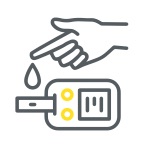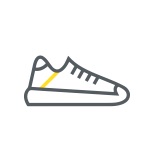BAQSIMI Basics
BAQSIMI Basics
- Keep the tube sealed until ready to use. Being exposed to moisture can cause BAQSIMI to not work as expected
- Each BAQSIMI device contains 1 dose (3 mg) of glucagon nasal powder and can only be used once
- BAQSIMI is for nasal use only
- BAQSIMI should not be used past its expiration date
- Remember to tell those close to you where you keep BAQSIMI
- You can still use BAQSIMI if you have a cold or are taking cold medicine.
- BAQSIMI does not need to be kept in a refrigerator. It can be stored at temperatures up to 30˚C (86˚F).
Carry BAQSIMI with you and keep BAQSIMI in the places you spend the most time – like home, work and school
Talk to your doctor about where the best place is for you to keep your BAQSIMI. Here are some places you may want to consider:



For Children



For Adults



Access useful Baqsimi resources so you can be prepared
